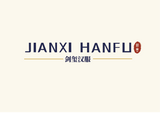what is Hanfu Pibo?
Pibo, this poetic and graceful accessory, is just like an elf dancing gracefully in the world of Hanfu, adding endless charm and elegance to the ladies dressed in Hanfu.

The characteristics of Hanfu Pibo
Pibo is usually a long and narrow silk scarf. Its materials are mostly silk or gauze, which are thin, soft, and smooth to the touch. Generally, its length is about two meters, and its width is between 20 and 30 centimeters. However, there are also some special styles that are wider or narrower to meet different aesthetic and design requirements.

The Color Symbolism of Hanfu Pibo
In terms of colors, pibo is colorful. Common colors include bright red, soft pink, fresh light blue, elegant off-white, and mysterious purple. These rich colors can either contrast with the main color of Hanfu to form a sharp contrast, like the color combinations of red and green, pink and blue, creating a lively and bright visual effect. Or they can be matched with the same color family or similar colors, such as light pink and dark pink, light blue and dark blue, to show a harmonious, gentle, and elegant temperament.
The Origin of Hanfu Pibo
The origin of pibo can be traced back to ancient times. According to relevant historical records, its prototype might be the cloth towels used by ancient working people to wipe sweat or block the sun when they were working. With the passage of time and the development and evolution of social culture, it gradually integrated into the clothing culture system and became a decorative accessory, reaching its peak of popularity during the Sui and Tang dynasties.

Hanfu Pibo (silk shawl) was not exclusive to the nobility.
In that prosperous, culturally diverse, and open era, pibo, with its unique charm, became an indispensable part of women's clothing. Whether it was noble ladies in the court or common women, they all loved it very much. From a large number of Tang Dynasty paintings, sculptures, and literary works, we can frequently see the figure of Pibo. It winds around women's shoulders and arms like flowing clouds and flowing water, fluttering in the wind, showing their graceful postures vividly, and vividly reflecting society's admiration and pursuit of women's soft and elegant images at that time.
The Wearing Methods of Hanfu Pibo
There are various ways to tie pibo, and each way can show different styles and charm. A common way is to put one end of the pibo on one shoulder and let the other end hang naturally in front or behind the body. This tying method is simple and elegant, which can highlight the flowing feeling of pibo. When walking, it seems that a gentle breeze is blowing, making people sway gently, giving them a casual and comfortable aesthetic feeling. Another way is to cross the pibo in front of the chest and then wrap it around to the back and let the two ends hang down on both sides of the body, respectively. This tying method makes the pibo form a beautiful crossed shape in front of the chest, adding a sense of hierarchy and refinement, showing a more dignified and elegant look. In addition, you can also tie the two ends of the pibo at the back to make it hang down naturally, like a waterfall. This tying method can show a simple, neat, and yet lively temperament, which is suitable for matching with Hanfu in a simple style.
The Profound Significance of Hanfu Pibo
Pibo plays an extremely important role and has unique cultural connotations in Hanfu wearing. It is not only a decoration but also a symbol of cultural symbols. From an aesthetic perspective, the graceful and flowing pibo can soften the overall lines of Hanfu's shape, adding a touch of lightness and softness to it, making the wearer look like a fairy coming out of an ancient painting, showing unique charm and temperament whether in static or dynamic states. In terms of cultural connotations, the existence of pibo enriches the cultural meaning carried by Hanfu. It reflects ancient women's pursuit of beauty and longing for an elegant life and also reflects the aesthetic concepts, cultural atmosphere, and craftsmanship level of the society at that time. It is the inheritor of history and culture. Through this small accessory, we can travel through time and space and feel the profound and extensive ancient culture.
The Ingenious Matching of Hanfu Pibo
In combination with different Hanfu styles, pibo can also complement them ingeniously. For example, when paired with high-waisted ruqun, pibo can weaken the visual oppression that may be brought by the relatively high neckline of high-waisted ruqun, making the whole upper body look lighter and more lively. The two set off each other, showing the liveliness and youthful sweetness of young girls. When paired with curved-front shenyi, pibo adds a touch of softness and grace to the solemn and solemn curved-front shenyi, enabling the wearer to show their identity, status, and cultural accomplishment while still maintaining the softness and affinity of women. And when it is paired with aoqun, it can create a unique sense of refinement among the thick winter clothing, allowing the wearer to keep an elegant and charming posture while keeping warm.

Pibo, this ancient and charming Hanfu accessory, has been passed down to this day in the long river of history with its unique charm. It has witnessed the changes of the years and carries rich cultural connotations. Whether in ancient times or modern times, it can bring people the enjoyment of beauty and touch their hearts. Let's not neglect this lively element in the process of inheriting and promoting Hanfu culture. Let Pibo continue to dance in time and continue the thousand-year relationship between it and Hanfu.


